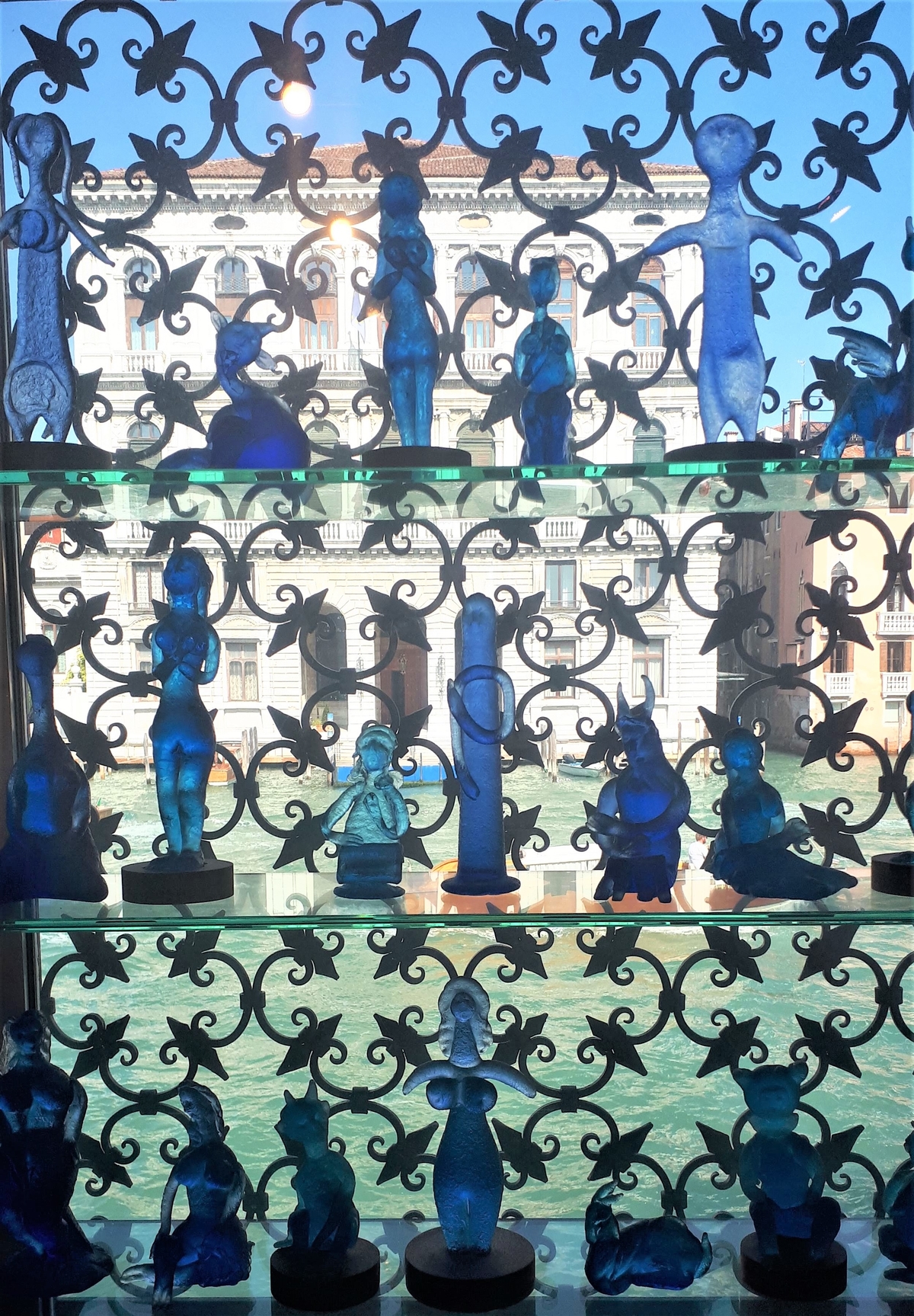
he life story of Peggy Guggenheim is a story about intuition towards artistic values and a sincere passion for art. A legendary visionary comes from a wealthy New York family. Already at an early age, she becomes a rich heiress, after the sinking of the Titanic, which her father was returning from Europe with. After finishing school, Peggy and her mother went to live in Paris.
"I always did what I wanted"
She soon marries Laurence Vail, a writer, painter, and sculptor of the Dada movement, with whom she has two children. Thanks to her husband, she soon found herself at the heart of the Parisian bohemian and American expatriate society. Many of her acquaintances at that time, such as Constantin Brancusi, Djuna Barnes, and Marcel Duchamp, became lifelong friends.
London's phase
The next love takes her to London. It lasts a very short time due to the untimely death of the partner. 1937 Peggy decides to open a gallery. Her friend, writer Samuel Beckett exerts a huge influence on her and introduces her to his circle of high art friends. He advises her to turn to contemporary art, which she herself foresaw. She meets Jean Cocteau and organizes his first exhibition in the gallery named Jean Guggenheim. On the other hand, Dushan introduced her to artists and taught her, as she said, "differences between abstract and surrealist art"In the following year and a half, she became known for the exhibitions of the most avant-garde artists of that time. Wassily Kandinsky, Ives Tangui, Rita Kernn-Larsen.
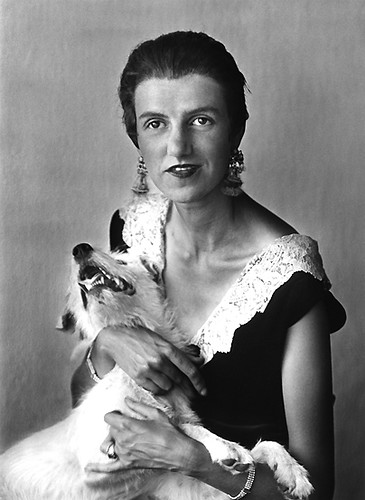
“Peggy Guggenheim (1926)” by lvecchio57 is licensed under CC BY-ND 2.0.
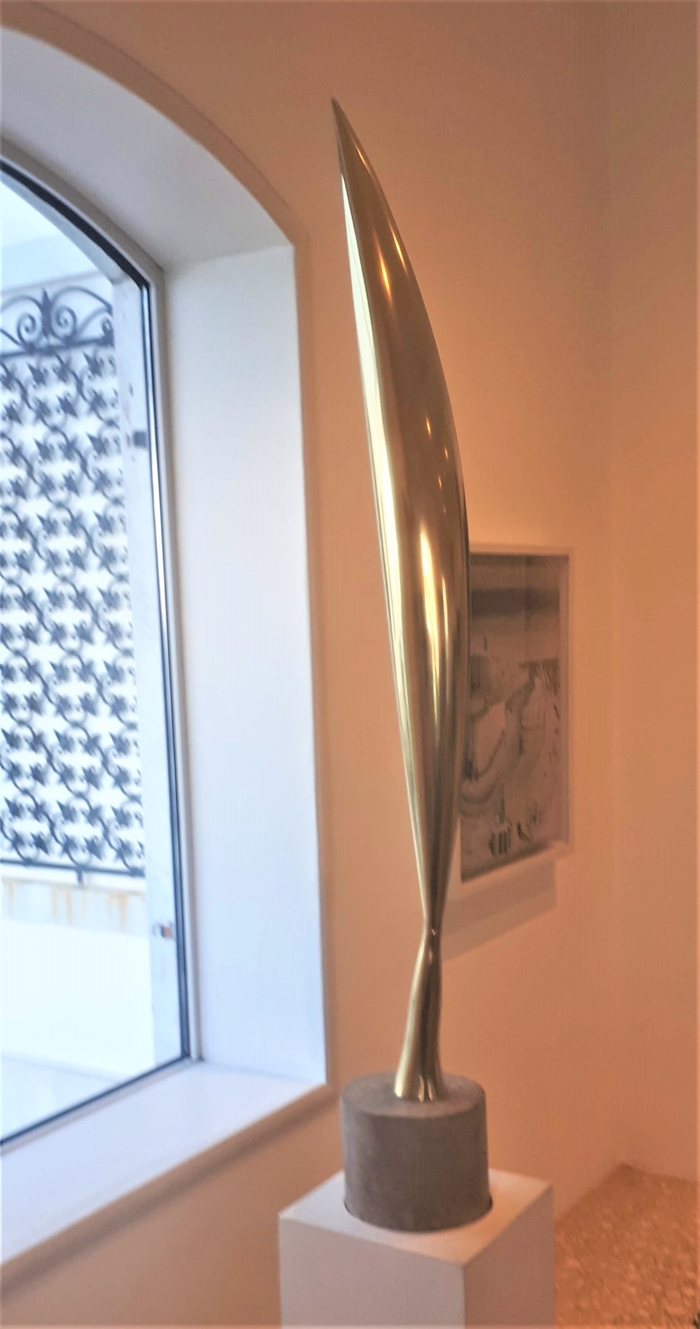
Peggy may not have had a great education in classical and contemporary art, but she was a genius in establishing contacts with the most important people in art. That's how she met the influential London art critic Herbert Read. She persuaded him to quit his job as a magazine editor and accept to be the director of her new project. For the project of opening a modern museum in London, Reed made a list of artists who should be in the museum. They were later revised by Duchamp and Nellie Van Doesburg, the widow of the Dutch artist Theo Van Doesburg from the De Stijl movement.
This list will become the basis of her collection. However, World War II is slowly approaching and she abandons the idea of a museum. However, she maintains a list of works of art that she intends to acquire for his collection.
World War II in Paris
Buy one painting every day
Shortly before the start of the war, Peggy moves from London to Paris, where she buys works directly from artists.
Her motto was: "Buy one painting every day".
While the fascists were marching towards Paris, she bought the famous Bird in Space sculpture from the studio of Constantin Brancusi. Contemporary art was particularly attacked by the Nazis, declaring that style a degenerative art.
Parallel to her purchases, the American journalist Varian Fry has a secret mission. Collect and ship from France about 200 names of artists, writers, and members of the European intellectual elite. The mission was organized by the director of the MoMa Museum and Eleanor Roosevelt. He soon realized that the list was much longer and asked Peggy Guggenheim for financial help.
She agrees to help and she herself is counted as one of the 2000. Together with her ex-husband Vail, and children, Vail's new wife, she manages to leave Europe and save herself from World War II.
In that mission, he met Max Ernst (Max Ernst), a surrealist painter, and Andre Breton (Andre Breton), a poet, the founder of the same direction to which Salvador Dali and Magritte belonged. Max Ernst was the choice of her heart. She is committed to saving his works, but also the unfinished ones, along with them. After escaping to New York, she marries him.
Peggy Guggenheim kickstarts the New York art scene
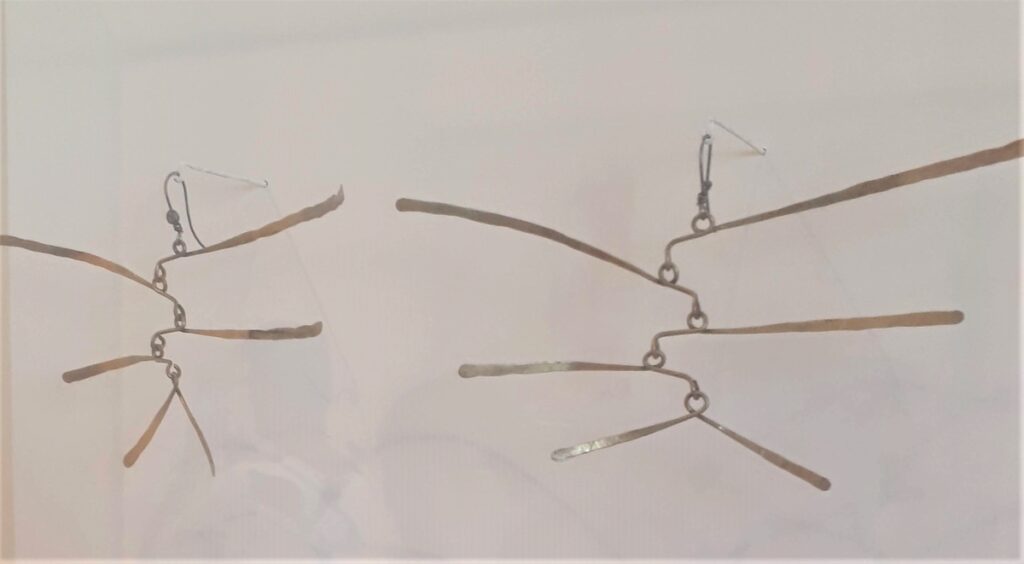
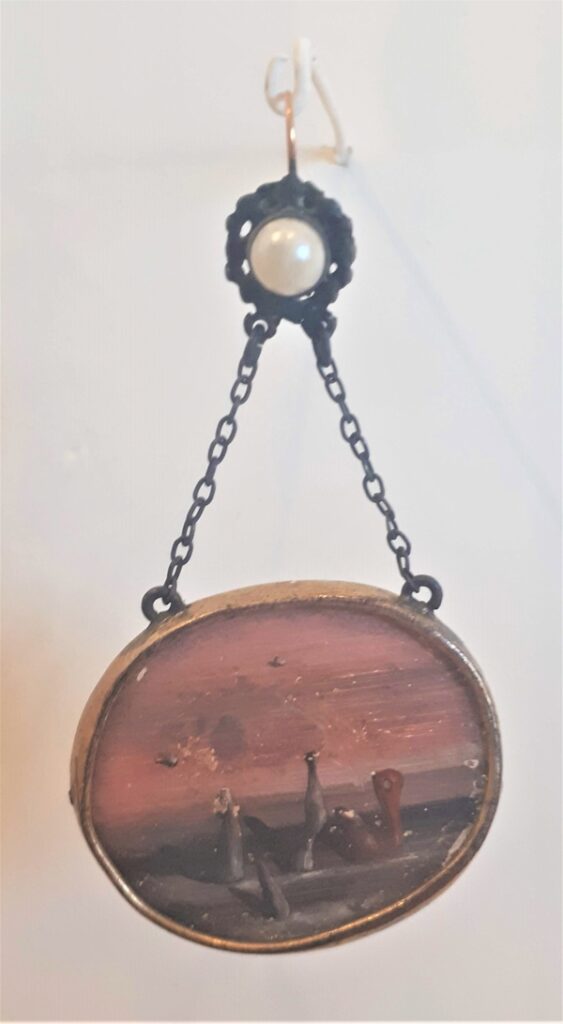
Peggy is opening a new gallery in New York called Art of this century. It was intended for artists of surrealism in one part, and artists of abstract art in the other. At the opening, she wore two different earrings. One earring by two authors from each of these directions, specially made for her by surrealist painter Yves Tangui and sculptor Alexander Calder. In this way, she wanted to emphasize the double character of her gallery and vividly announce that concept.
The gallery did not have a window facing the street, it was on the first floor. She knew that the gallery would go unnoticed unless she made it attractive and a topic of conversation in high circles. That's why she hired the famous Viennese architect and set designer Friedrich Kiesel to design the interior. His project was based on two different entities. In this way, he responded to her concept of a double gallery, each of which had its own theatrical specifics.
The space for surrealism was designed by Kiesel with curved wooden panels on the walls and picture supports in the form of geometric spikes. The works she bought in Paris and saved from the Nazis were exhibited here, and her husband Max Ernst also exhibits his surrealist works.
The best gallery for contemporary art
Soon the gallery gained a reputation as the best for contemporary art. The most famous artists of that time Frida Kahlo, Mark Rothko, Jackson Pollock, and De Kooning exhibited in that gallery. It was the gallery where American art made itself a springboard to the world stage.
In 1943, she organized "Exhibition of 31 women" where the most famous artists of that time exhibit, including Milena Pavlović Barili. Unfortunately, this exhibition is also the cause of the breakdown of the marriage with the artist Max Ernst.
Peggy drowns herself in work around the gallery. She turns her attention to Jackson Pollock and commissions a large piece for the entrance hall of her home. It can be said that this commission launched Pollock into the world of recognized artists - and Peggy must be credited for that.
Despite the success of her New York gallery, Peggy wanted to return to Europe. As soon as it was possible, she did it in 1947. She closed the gallery, packed up the collection, and started a new life.
Honorary citizen of Venice
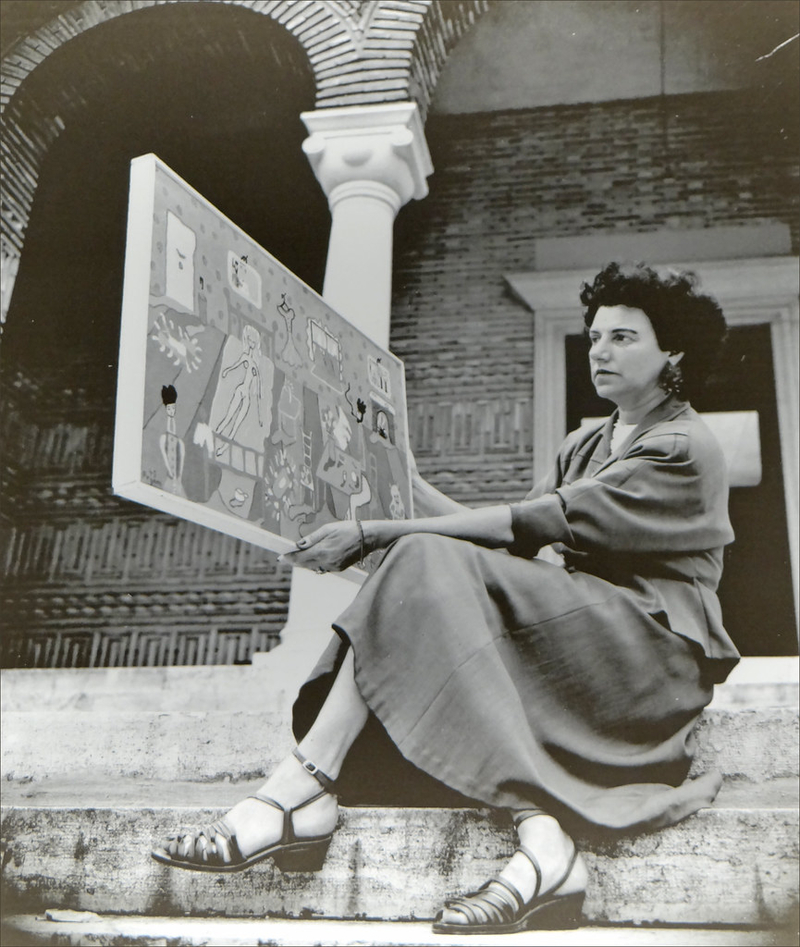
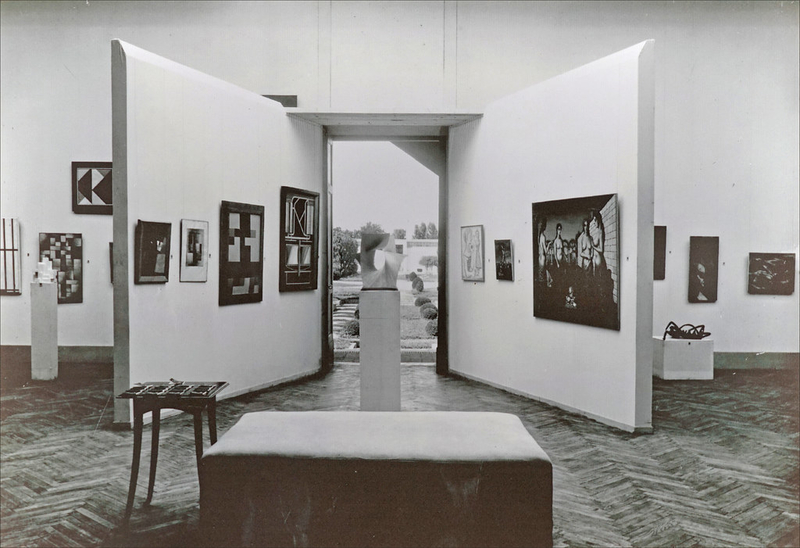
Peggy was invited to exhibit her collection independently at the Venice Biennale '48. in the pavilion of Greece which did not participate due to the local war. It was a big precedent because the pavilions were reserved for representatives at the state level. Until then, it had never happened that a collector received such an invitation. In this way, her incredible work in the promotion of contemporary art was honored.
Peggy exhibited 136 works of art at the Biennale, of which she donated over 20 to museums around the world.
It was the European debut of the art of Jackson Pollock and the first appearance of a new generation of American painters outside the United States. Peg's collection explored the most contemporary art: cubism, futurism, abstraction, surrealism, and above all, abstract expressionism.
Back in the New York gallery, it was evident that Peggy took care of the way of displaying the artwork by making a deviation from the simple display on white walls.
The Venetian architect Carlo Scarpa designed the setting of her pavilion at the Biennale. The artworks are opposed stylistically, but Scarpa was looking for shared narrative details that could establish a dialogue. Dialogue is established by causing conflict between incompatible works.
The "Collezione Peggi Guggenheim" sign at the entrance to the pavilion was also designed by Scarpa. A model of this pavilion with the exact layout of the paintings is on permanent display in her museum.
For the next 20 years, Carlo Scarpa was constantly involved in the setting of the Biennale, and most of his brilliant career was focused on museology.
The Peggy Guggenheim Museum
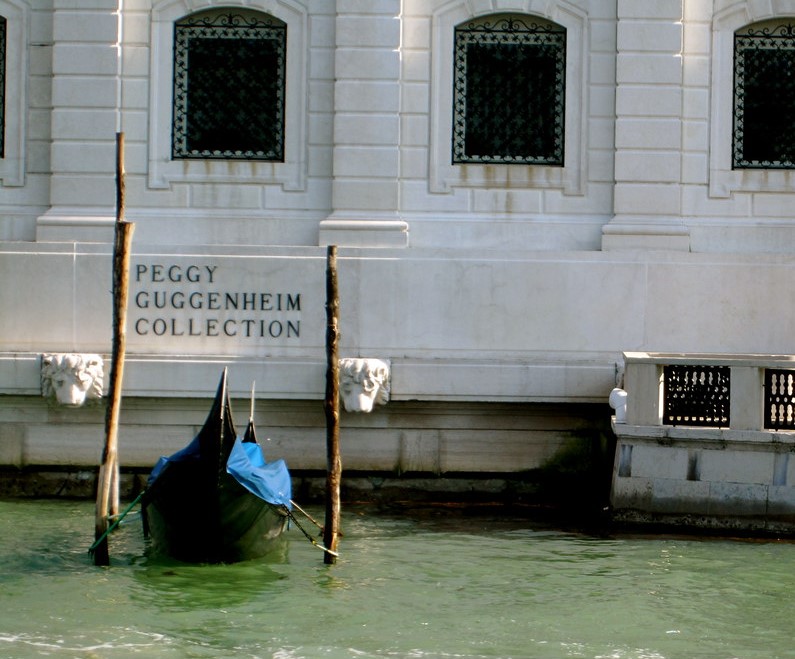
“Peggy Guggenheim Collection” by La Citta Vita is licensed under CC BY-SA 2.0.
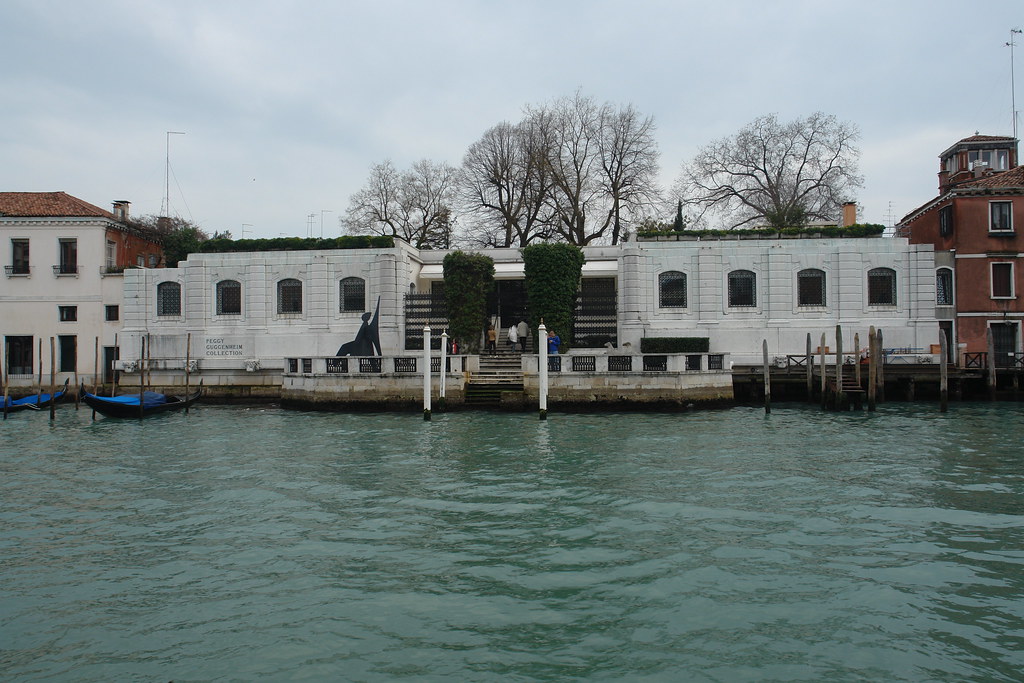
“Peggy Guggenheim Museum” by GOC53 is licensed under CC BY 2.0.
After the Biennale, Peggy fell in love with an unfinished palace from the 18th century. Palazzo Veniere di Leoni, on the Grand Canal, near the church of Santa Maria dela Salute, was her choice. The family it belonged to in the past, gave 3 rulers, the Doges to Venice. Thus, they gained the right to highlight sculptures of lion heads on the facade. This palace became her home for the rest of her life as well as a gathering place for artists and art lovers. It was necessary to carry out the alterations for the exhibition space since the Palazzo was unfinished.
1949 she organized an exhibition of contemporary sculpture. After that, the first European exhibition of Pollock's works in Venice. Her collection was shown in Florence, Milan, Amsterdam, Brussels, and Zurich.
Since 1951, Peggy has opened the doors of her home to visitors who wish to view her collection several afternoons a week.
Life in Venice
Peg's Venetian neighbors spoke of her as a princess.
She had a habit of visiting Venice every day in her private gondola at 4 p.m. Then her friends would start showing up to join her and her dogs.
She seemed to move through life effortlessly even though she was experiencing major breakdowns and life tragedies. Her daughter - painter Pegeen Veil left too early by committing suicide. One part of the museum is dedicated to her works.
During her Venetian years, she continued to collect works of art and to support artists,
1962 was nominated as an honorary citizen of Venice.
The Solomon R. Guggenheim Museum in New York (founded by her uncle in 1937) invited Peggy to exhibit her collection there. Immediately after that exhibition in 1970, she decided to donate her Palazzo Veniere di Leoni and a collection of 300 works of art to the museum for management and preservation.
Today, her granddaughter Karol Weil is the director, and the Peggy Guggenheim Museum is the second most visited museum in Venice - right after the Doge's Palace.
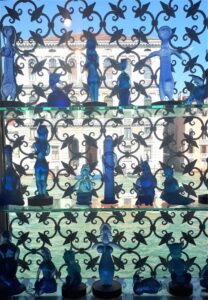



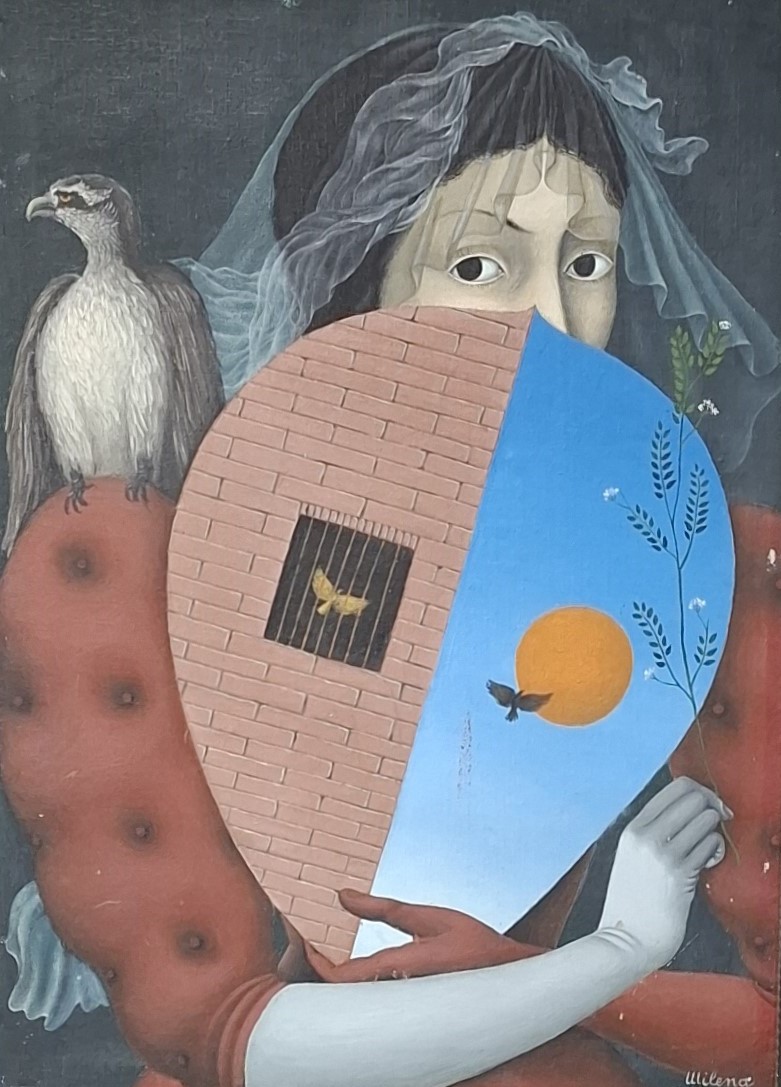
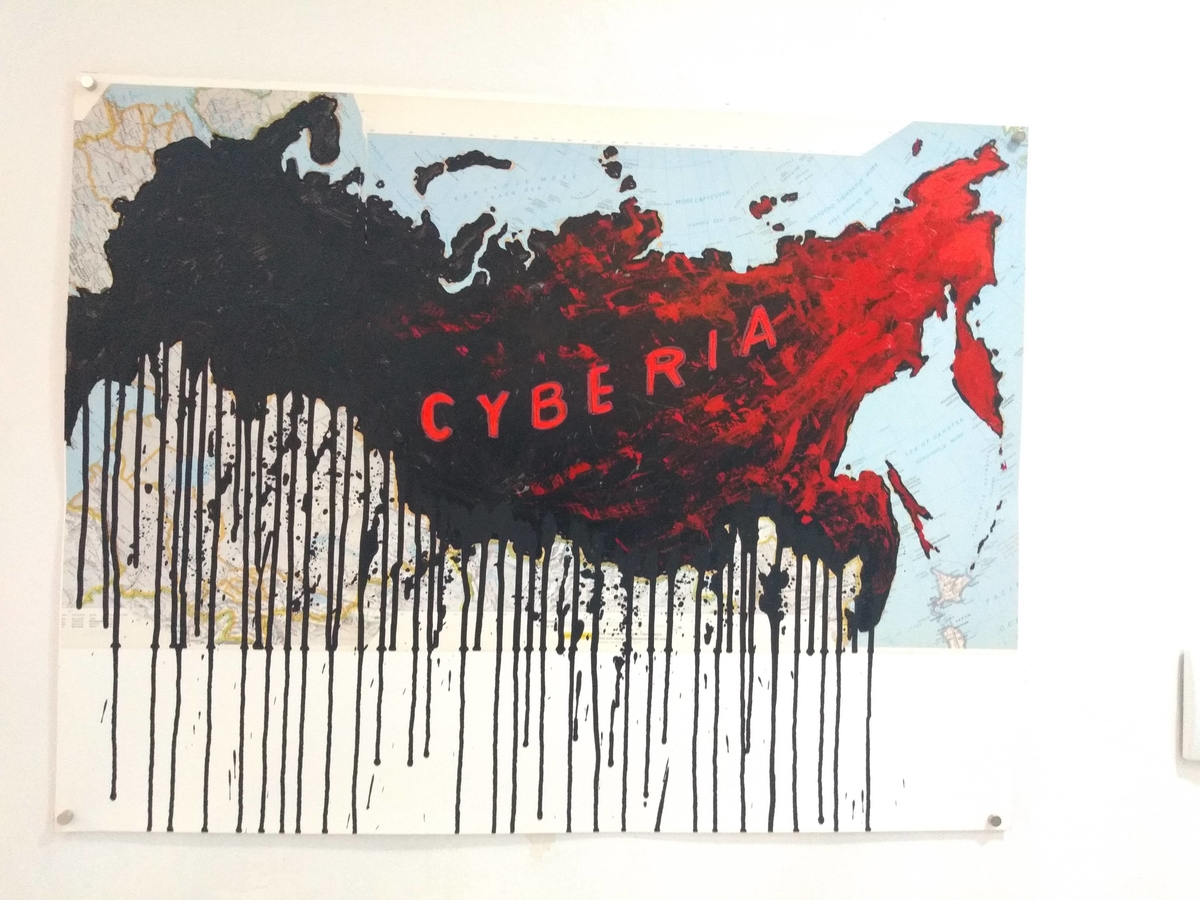
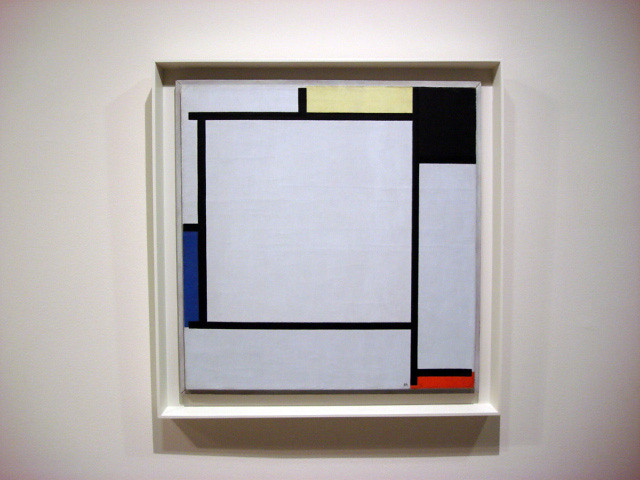
Pingback: Milena Pavlović Barilli oslikava svoju dualnost ⋆ ARXXITEKTURA